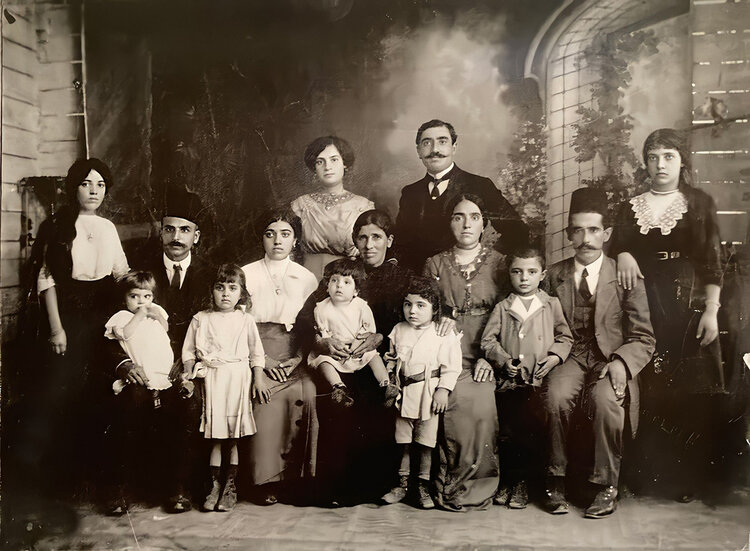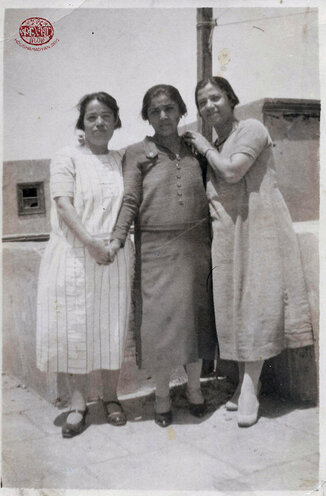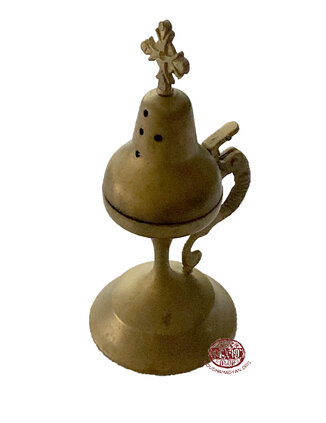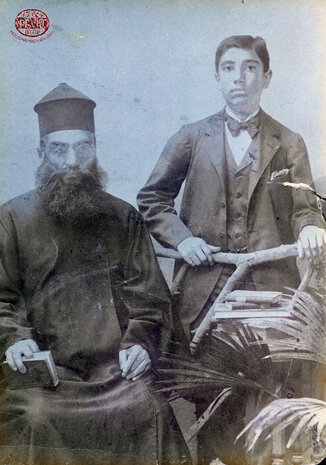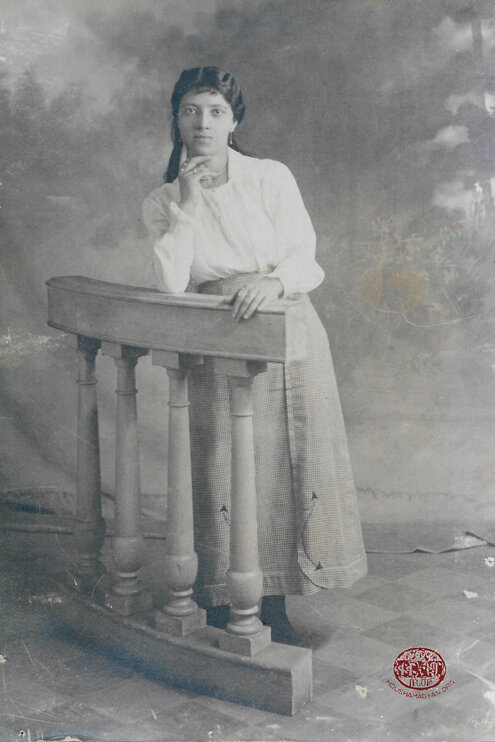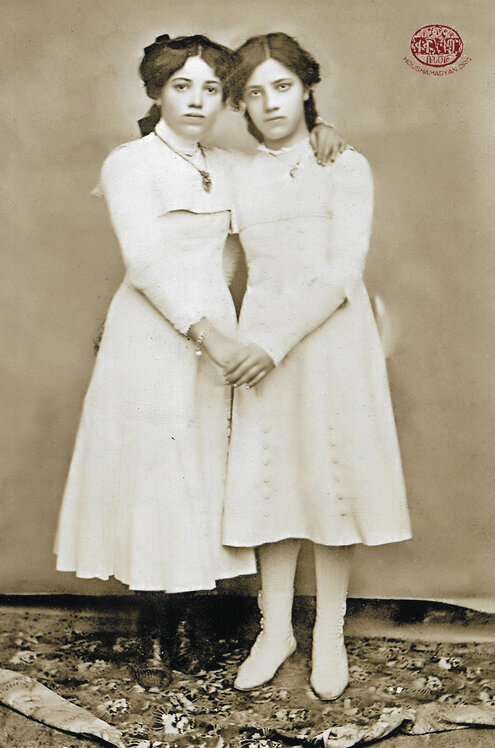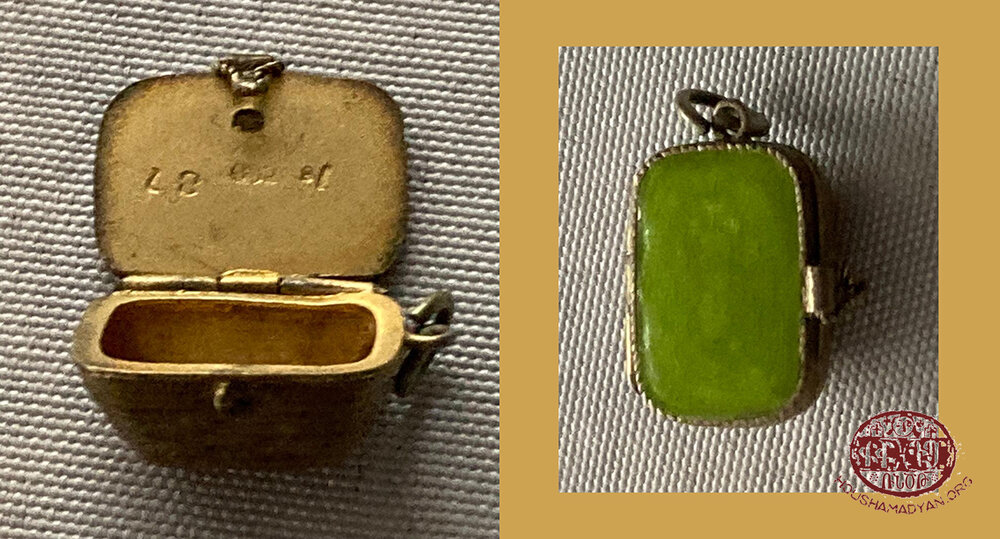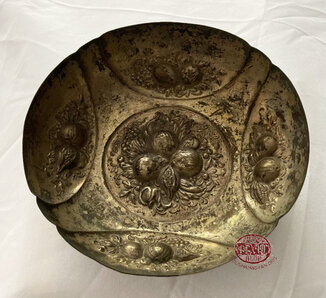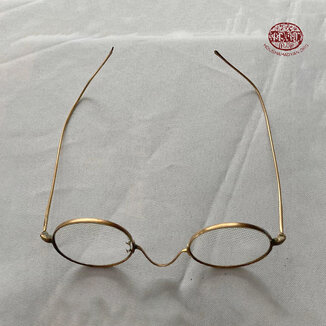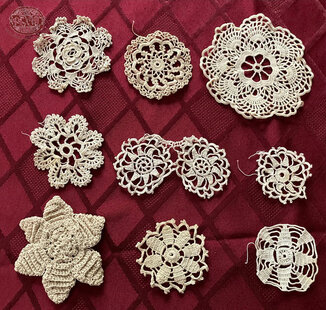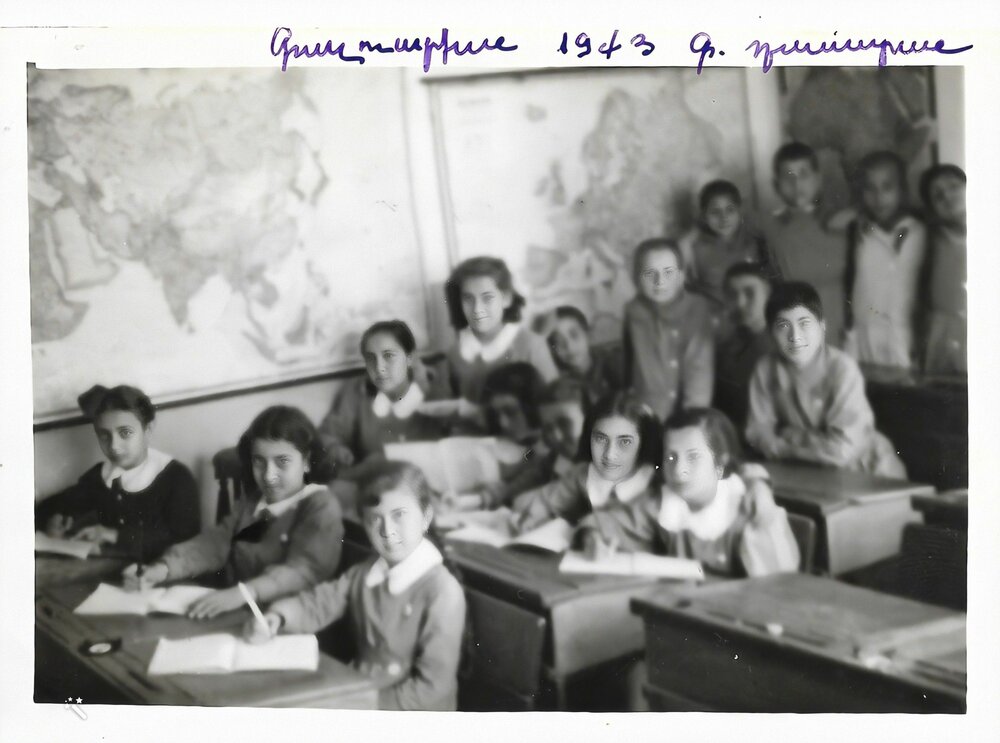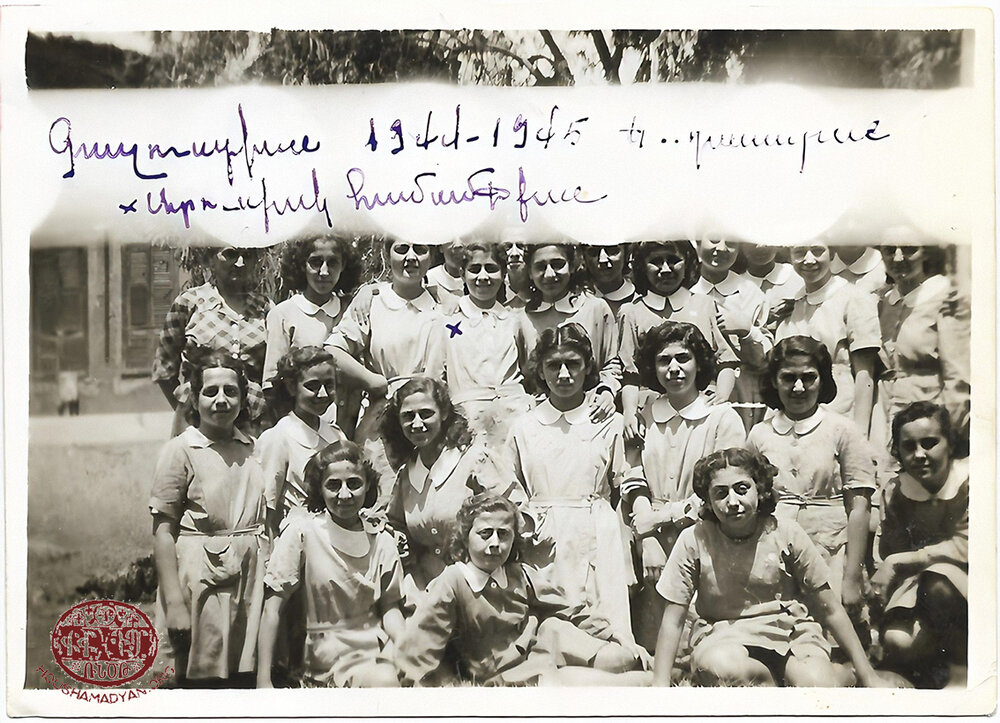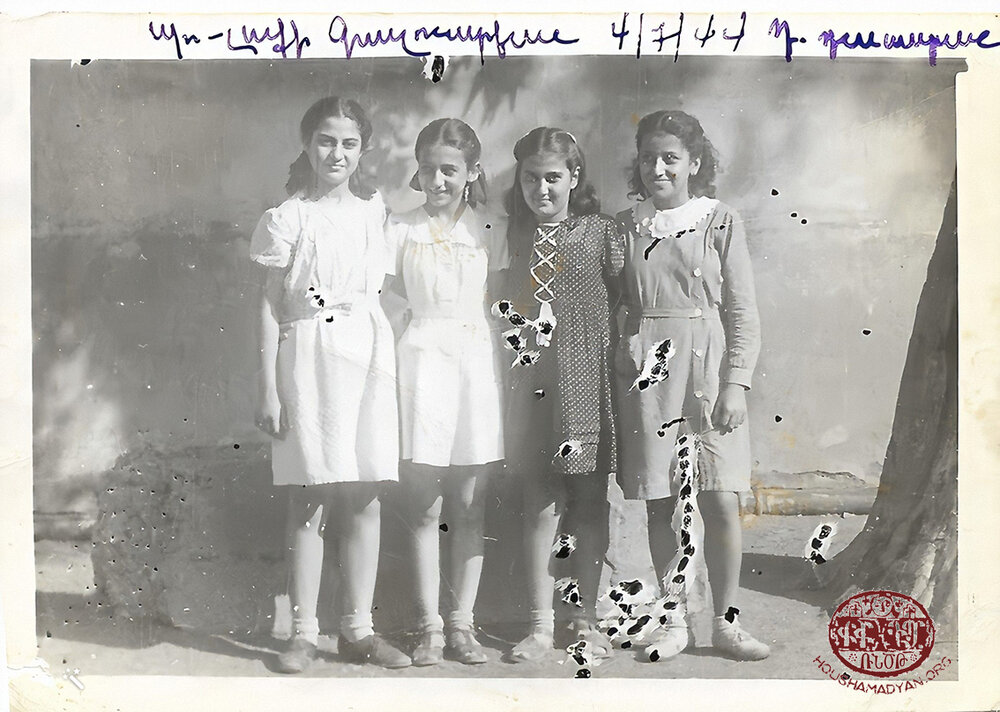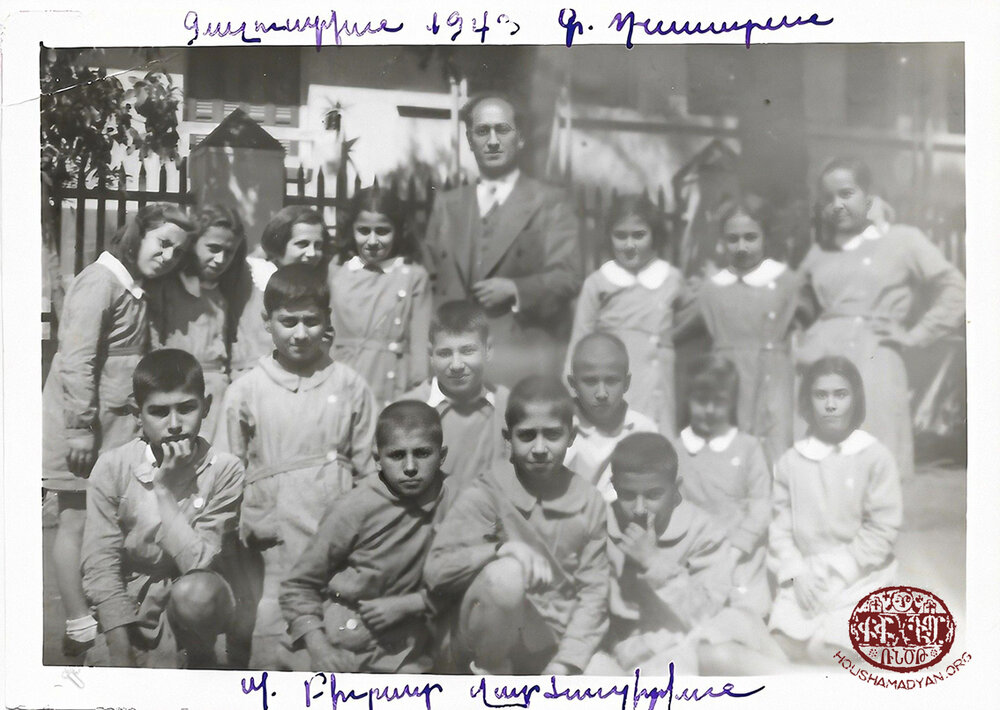Keoseyan/Balouni Collection – New York
20/06/23 (Last modified 20/06/23) - Translator: Simon Beugekian

The Keoseyan family hailed from Arapgir. Among the family’s oldest ancestors, we know of Haroutyun/Artin, who was born around 1800. His son was Pilbos Keoseyan (born in 1822), who had three children: Ghazar, Nartouhi, and Garabed (1854-1902). There is a preserved petition from the early 19th century, addressed to the Armenian Patriarch of Constantinople, which features an alternative version of the Keoseyan surname, Keose Pilikoghlu.
This page presents the history of Garabed Keoseyan’s branch of the family. Garabed attended the Armenian school of Arapgir, and at a young age began serving as the sexton of the Arapgir church. In 1886, he was ordained as a priest by Bishop Yeznig Abahouni, Prelate of Arapgir, and was styled Father Yeznig Balouni. He married Anna Dermirjian (1861-1936), with whom he had seven children: Peprone (who later married Ghazar Devejian), Armenouhi (later Kendikian), Makrouhi (born in in 1880s, and later married Kevork Deovletian), Araxi (born in the 1880s, and later married Moushegh Kherbegian), Pilbos (born in 1883), Vartanoush (who later married Sahag Tourabian), and Eliza (born in 1891, and later married Kevork Terzibashian).

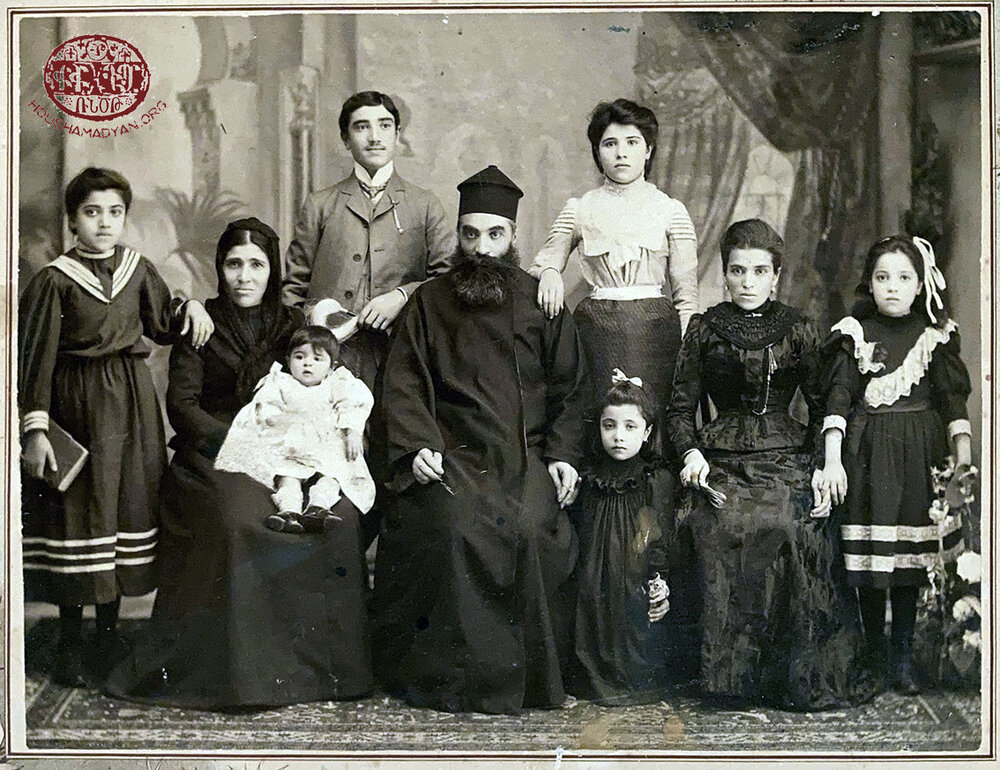
In 1894, during the reign of Sultan Abdul Hamid II, Father Yeznig Balouni was accused of revolutionary sympathies and was exiled from the Ottoman Empire. In 1895, he settled down in Cairo (Egypt) with his family, where he served in the Holy Mother of God Church. Two of Father Yeznig and Anna’s daughters, Peprone and Armenouhi, remained in Arapgir. They were already married and had their own families. Peprone’s husband, Ghazar Devejian, was a merchant. He was one of the first Armenians to be arrested in Arapgir in 1915, when the Armenian Genocide began. He was murdered in prison. The couple had three children: Dikran, Yeznig, and Dikranouhi. Peprone and her children survived the Genocide and made their way to Aleppo, and from there, to Beirut.
In Cairo, Father Yeznig taught Armenian at the local Khorenian School. He was also employed as a private tutor, teaching Armenian to the children of one of the most prominent contemporary Armenian-Egyptian figures, Boghos Noubar. Father Yeznig participated enthusiastically in the relief efforts for the victims of the 1895 Hamidian massacres in Arapgir. As part of these efforts, he raised funds locally that were then sent to Arapgir.
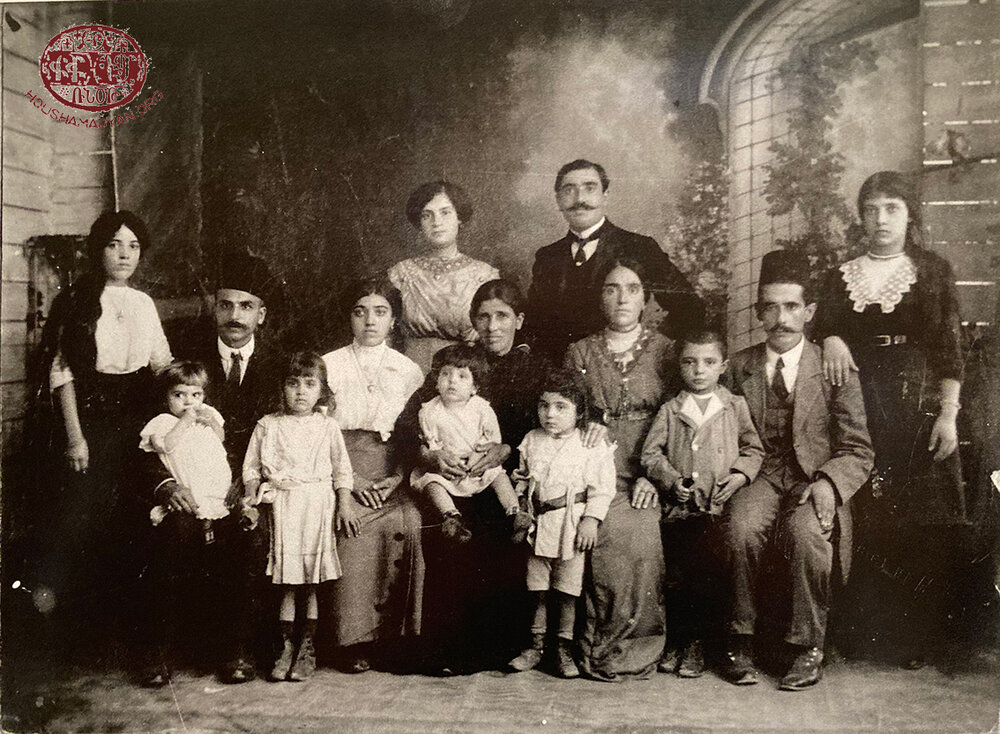
Father Yeznig also served as a visiting priest for Armenian communities in remote areas of Egypt, outside of Cairo and Alexandria. In that capacity, in March 1902, he began a tour of various locations with Armenian populations, including Girga, Aswan, Shellal, Beni Suef, Faiyum, Minya, Asyut, and Luxor. While in Luxor, he suffered sunstroke, and died as a result. His body was transported to Cairo and buried in the city’s Armenian cemetery.
Father Yeznig had a large library. In the 1930s, his collection of books was donated to the newly opened repository of the Catholicosate of the Holy See of Cilicia, which had just established its seat in Antelias (Lebanon).
Among Father Yeznig’s close relations were the sisters Aghavni and Mariam Keoseyan. We have not been able to determine the precise nature of their familial relation, but they were most probably cousins. Aghavni and Mariam were born in Arapgir, in 1877 and 1881 respectively. They were the daughters of Mahdesi Garabed Agha, who had emigrated from Arapgir to Constantinople and was engaged in the grain trade. The family settled down in the Balat neighborhood of Constantinople, and the two sisters attended the Khorenian School. Aghavni and Mariam began working as nurses in the National Hospital. There, they met Sister Christine Papazian, and through her, they joined the Kalfayan Order, which was an order of nuns that operated under the aegis of the Constantinople Armenian Patriarchate.
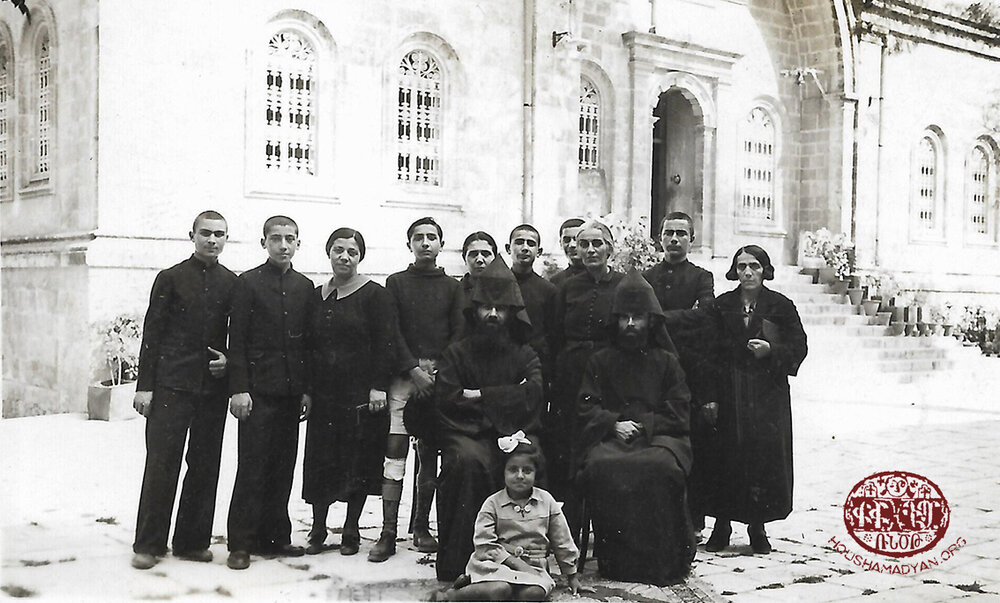
After the death of Reverend Mother Srpouhi Kalfayan (1822-1889), the Kalfayan Orphanage in the Khaskugh neighborhood (founded in 1866), owned and overseen by the Kalfayan Order, fell into disrepair. In 1902, Sister Christine Papazian assumed leadership of the institution, and the Keoseyan sisters were appointed her assistants. These changes breathed new life into the orphanage. After Reverend Mother Christine Papazian’s death (1919), Aghavni became the mother superior of the Kalfayan Order. She died in 1955, and was succeeded by Mariam, who served in this position until her death in 1970. In 1932, the two sisters visited Jerusalem and Cairo. It is highly probably that while in Cairo, they met with members of the Balouni family. In any case, we know that the two sisters and the family exchanged correspondence. Mariam was also a painter. One of her works was an oil painting of Reverend Mother Srpouhi Kalfayan. She also sent a photograph of the altarpiece of the chapel of the Kalfayan Orphanage to her family in Cairo, writing that she had painted the altarpiece.
One of Father Yeznig and Anna’s daughters, Eliza, married Kevork Terzibashian, who was a jeweler by trade. His mother was Vosgi Terzibashian (nee Baghdigian). Both were born in Arapgir, and were the only survivors of their family from the 1895 Hamidian massacres. They arrived in Cairo in 1899, accompanied by two boys who were the same age as Kevork, most probably Sahag Turabian and Moushegh Kherbegian. While Eliza married Kevork, her sisters, Vartanoush and Araxi, respectively married Sahag and Moushegh. Sahag and Vartanoush later emigrated to Soviet Armenia with their family.
We know that Kevork and Eliza lived in Khartoum for some time. This city was home to a small community of Armenians from Arapgir. One of Kevork’s relatives, watchmaker Artin Arakelian, had previously established himself in Khartoum. He was childless and wished for his name to live on. Presumably, their relationship explains why Kevork’s two eldest children were given the Arakelian surname.
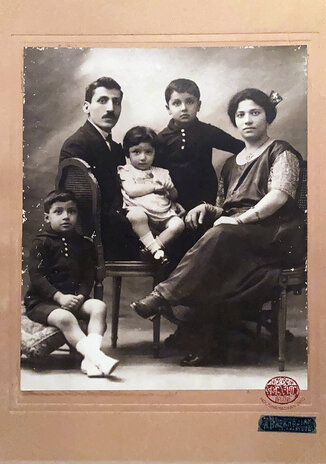
The altar of the chapel located in the courtyard of the Kalfayan Orphanage, Istanbul. The photograph was sent by Sister Mariam Keoseyan to the Balouni family in Cairo. On the back of the photograph, she wrote that the altarpiece, featuring a painting of the Virgin Mary, was her work. The chapel was built in 1889. It was renovated twice: first in 1923, with funds provided by the Keoseyan family; and a second time in 1962.
Eliza and Kevork had four children: Vahe Arakelian (1917-2001), Noubar Arakelian (1919-1985), Vartkes Terzibashian (1922-1994), and Manoushak Terzibashian (born in 1931). Manoushak married Albert Tchopourian, and with him had two children, Jean and Garen. This family history is based on the information provided to us by Janine’s husband, Domenick Masotti.

Sources
- Hagop Chinar and Berdj Erziyan, Haruramya Hishadagaran Kalfayan Dan, 1866-1966 [Centenary Memory Book of the Kalfayan House, 1866-1966], Istanbul, 1966.
- Vatsounamyag (1866-1926) Kalfayan Aghchgants Vorpanotsi, Khaskugh [Sixty-Year Anniversary (1866-1926) of the Kalfayan Girls’ Orphanage, Khaskugh], 1926, Constantinople, H. M. Setian Printing House.
- H. Setian, “The Late Father Yeznig Balouni,” Arshalouys [Dawn], third year, number 275, Cairo, May 18/31, 1902.
- Sarkis Pakhdigian (ed.), Vosgekedag. Darekirk [Vosgekedag. Yearbook], Volume C, Beirut, 1948.
- Antranig L. Poladian, Badmoutyun Hayots Arapgiri [History of Armenian Arapgir], New York, Baykar Printing House, 1969.
- With special thanks to Senior Priest Father Krikor Damadian and Mihran Minasian.
